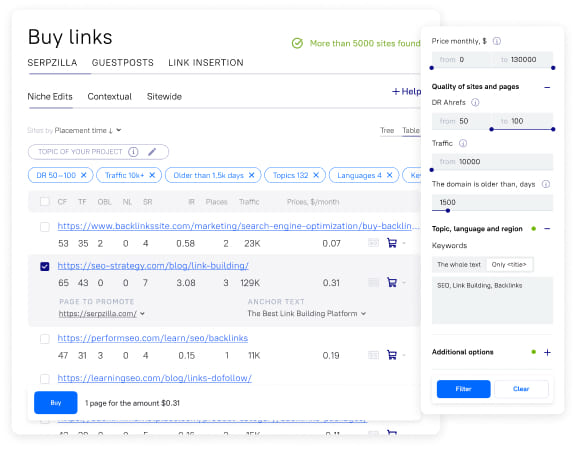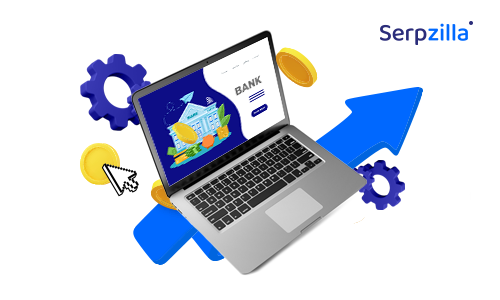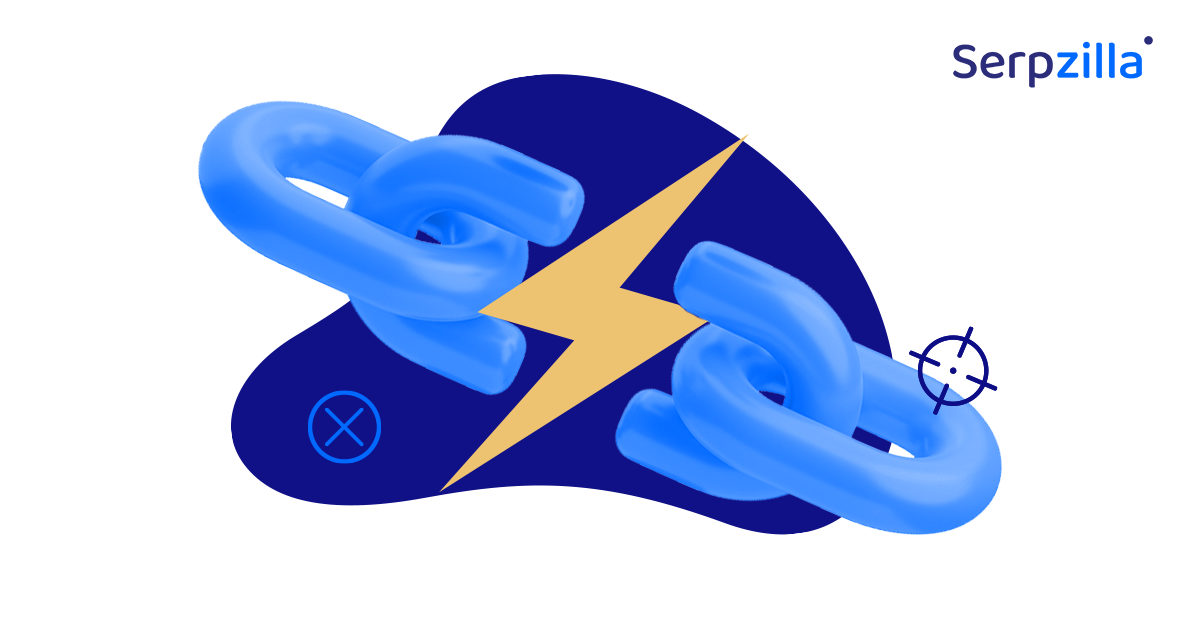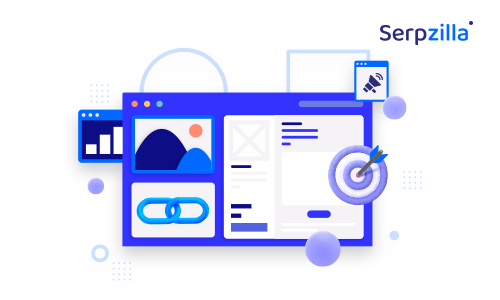Using Tiered backlinks is one of the effective approaches to increasing traffic to your website and improving its positions on Google. What are those backlinks? What are their advantages? How to use them to move your resource to the top of the search results? Our team and market experts are here to tell you about it.
1. Tiered link building: what are Tier 2 and Tier 3 links?
Tiered link building is a method of strengthening the original backlink by deploying additional backlinks referring to it. This method originated a decade ago, but still is very efficient.
The main idea is to create backlinks not only for the promoted website, but also to the pages that link to this resource (pages with initial backlinks themselves), and even to the pages that lead to these referring pages.
Confusing? Here’s how it works:
- Tier 1 are backlinks that directly link to a website – your regular backlinks. They can be both natural or artificially created.
- Tier 2 are backlinks leading to pages with Tier 1 backlinks.
- And Tier 3 backlinks are links that lead to pages with Tier 2 backlinks.
Here’s a visual representation for you:

It is widely considered that it’s best to follow this guidelines:
- The closer the link is to the promoted page (which is Tier 0), the higher its quality should be.
- Tier 2 backlinks are most often used in articles, reviews, etc. Such backlinks can be bought using various platforms, such as Serpzilla. This is important because the lifespan of a backlink directly affects whether it is worth investing in or not. With the right approach, Tier 2 backlinks will bring you 70-90% of the result.
- As for Tier 3 backlinks: their placement is often implemented via software solutions, which can create tens of thousands of backlinks daily. Yes, thousands, because you will need a lot of Tier 3 backlinks. They will allow for unlocking the full potential of your backlink profile.
Ramazan Mindubaev, Head of SEO at TRINET Group:
“For automated building of Tier 2+ backlinks, I recommend using GSA Ranker. Combined with XEvil for captcha solving and good proxies on powerful servers, such tools can yield amazing results. You will have to only form a list for placing backlinks and adjust business processes accordingly. For manual link building, I recommend using Serpzilla with their arsenal of rental backlinks: it will also make it possible to get good results, but at the lowest cost.”
Mikhail Shakin, Shakin.ru:
“To get the maximum effect on 2+ levels, I recommend parsing the top 1000 websites in Google through A-Parser. The task is to parse all the websites that rank in your niche. Next, upload the collected data into the GSA Platform Identifier, which quickly analyzes the list of websites and sorts them by the engines that the GSA Search Engine Ranker can identify. After that, the work in the GSA Search Engine Ranker starts.
As for Tier 1, you need quality links there. If you don’t need a lot of links, you can deploy Tier 2-3 backlinks in a 1:10 ratio. You can also use Serpzilla, they have a great automation when it comes to working with Tier 2”.
2. Who uses Tier 2 and Tier 3 links and why?
Tier 2 and Tier 3 link building is used by SEO specialists to achieve certain goals. For example, you need to promote a website that’s been stuck in the top 10 or top 20 for a specific request for a while. Maybe, you need to strengthen its backlink profile, and there is no way to increase the number of referring domains.
Tier 2 and Tier 3 backlinks can be used to promote any website, there are no restrictions. So, they are often used to improve results in niches that may be prohibited in certain regions. For example, CBD products, performance enhancing pharmacology, gambling, etc. When working with such topics, it is often difficult to get backlinks from many referring domains, so experts strengthen the backlinks they already have.
Ramazan Mindubaev:
“That’s right, these methods are actively used where you need to get the most out of every dollar invested. If you want to get a backlink that boosts your profile, you need to show the search engine that this backlink is trustworthy. So, you strengthen the backlink. And, of course one should pay careful attention to the quality of content on Tier 0 and Tier 1 levels”.
Links of the second and third levels are also often used to speed up the indexing of a page if it is not indexed: when a page has a link environment, it becomes more valuable to search engines. In addition, sometimes promotion with Tier is the only way to bring a resource to the top. For example, in situations where the site is optimized to the maximum, taking into account other ranking factors.
Mikhail Shakin:
“To speed up the indexing of Tier 2 and Tier 3, in my case, adding a couple more link levels through GSA SER works great.”
Taras Gushcha, SEO.UA:
“We use the second Tier to promote sites in complex niches. We pump mainly through the top media. This is important where the semantics are very limited, and there is a strong struggle for top positions. We use PBN and Serpzilla rental links to do this.”
3. How to promote a website with Tier 2 and Tier 3 backlinks?
Let’s take a step-by-step look at what you need to promote a resource using Tier 2-3 backlinks:
1. Choose the page you plan to promote and the most relevant query clusters. This can be any page: main page, catalog page, or a product card, etc.
2. Choose the referring domains that will link back to the page of choice. Choose those that link to your resource for a long time and show good behavioral and SEO factors (monthly traffic, browsing depth, bounce rate, user retention rate/time, etc).
You can check such metrics using various services. We, for example, traditionally use Ahrefs. Another quality metric that you should specifically pay attention to is page visibility. The page should rank in the top 50 on search engines.
You can do further work either manually or with the help of tools like Serpzilla. They will help automate routine work, control backlink placement and link indexing.
Mikhail Shakin:
“First of all, I try to promote those pages that are between 10 and 20 positions in Yandex and Google. Often they have good potential, which can be just revealed by links.”
Ramazan Mindubaev:
“First of all, I recommend strengthening such links that are reflected in the Google Search Console.”
3. Decide how many and which backlinks you will strengthen with Tier 2 and Tier 3 backlinks. It is recommended to select at least 10 links. Otherwise, there may be little to no effect at all.
Most often, the most trusted, traffic-rich or old backlinks are used as Tier 2 backlinks. To do this, the specialist runs through the current backlink profile and selects the most valuable backlinks. For example, backlinks in articles that have been on the referring domain for a long time.
You can go with new backlinks to strengthen your backlink profile, though. The main thing is to carefully analyze the referring domain where you place your Tier 1 backlink. It should be a resource with useful content, good traffic and existing for 12+ months. In addition, try considering the potential longevity of the referring domain. Pay attention to its development and growth stats over the last 6-12 months.
Ramazan Mindubaev:
“From our experience, strengthening newer backlinks gives a stronger result than strengthening old ones.”
Mikhail Shakin:
“When I choose Tier 1 pages to reinforce with Tier 2 backlinks, I look at the following parameters: traffic dynamics, search visibility. It is also better to have no other links on the page except mine (or as few as possible, at least), and the backlink should be DoFollow.”
4. After choosing domains, make an anchor list for backlinks. Try to use both anchor and “non-anchor” ones that are relevant to the referring page or landing page.
Ideally, you want to treat a referring page that hosts a Tier 2 backlink just like a landing page. It is crucial to conduct a competitor analysis to determine the required number of anchor and non-anchor backlinks. In general, it is acceptable to take the average ratio of 30% anchor to 70% non-anchor backlinks.
Ramazan Mindubaev:
“In addition to the anchors list, it is worth paying attention to the text, which contains the anchor: it should be relevant and unique. This can be achieved, for example, by generating texts with variable substitutions.”
As for the page that your anchor links should be relevant to, we can say from experience that there will be an effect even if the anchor list matches your Tier 0 page, and not the Tier 1 referring page.
Mikhail Shakin:
“With anchors I practice the following: at 2+ Tiers, anchors should be the same as at Tier 1. The same applies to the DoFollow/NoFollow ratio of backlinks.”
5. Start deploying backlinks. You can start by placing 15-30 backlinks on each referring page. For each backlink, you need to generate a unique anchor. According to our statistics, most SEOs follow this strategy: one unique link per one unique anchor text.
6. Once you’ve assigned the backlinks, start tracking their placement and indexing. Indexing can be defined through special operators or xml-map in Google. For example, you can use site: operator to check if there are any indexation errors with the backlink.
If you use the specialized services that we mentioned above, they will automatically take control over the process and replace backlinks if they are no longer relevant/broken/etc.
What else to pay attention to: it might so happen that a webmaster may use your Tiered link building approach to their advantage. For example, they notice you boosted their page, and all of a sudden they replace your backlink with another one. Maybe even that of your competitor, just because they paid more. Watch out for this.
Mikhail Shakin:
“I use a 1:10 ratio, meaning that for each single backlink on a Tier, I place 10 backlinks on the next Tier. Spares a lot of problems. For example, no one will be happy to see that, after posting an article with a backlink, I deploy tens of thousands links to that blog page. I post only 10 links to a posted article. Those backlinks are of high quality and usually come from, for example, free blogs. Since 2013, when I started working with Tiered backlinks, I never had any problems sticking to 1:10 ratio.”
4. How much do Tier 2 and Tier 3 links cost?
Speaking of the budget, link building using Tier 2 and Tier 3 backlinks, within the framework described here, we recommend allocating around $$40-100. This is enough to strengthen 10-30 referring pages and significantly promote the website further to the top for the queries from your semantic core.
Ramazan Mindubaev:
“We recommend gradually strengthening the backlink profile, especially at Tier 2. There, you can start from 10 and gradually increase the number of Tier 2 backlinks to a hundred, but with a mandatory emphasis on quality.”
You should notice first results within 1-2 months after backlinks are indexed. If the SERP position does not change positively, you might want to conduct a detailed audit. You may have made some mistakes. For example, the landing page might not be ranking and have just dropped out of indexing.
Boost your SEO results! Link building has become fast and easy with Serpzilla. Buy quality backlinks on authority websites with high DR.

5. Checklist for Tiered link building
To make it easier for you to navigate the topic, we have compiled a small checklist. If you want to promote your website with Tier 2 and Tier 3 backlinks, here’s what you need to remember:
- Tiered link building is a way to strengthen a backlink by placing additional backlinks for it. Remember: Tier 1 backlinks link directly to a promoted website; Tier 2 backlinks link to pages with your Tier 1 backlinks; Tier 3 backlinks refer to pages with your Tier 2 backlinks.
- Tier 2-3 backlinks strengthen your backlink profile by boosting a referring page with your Tier 1 backlink. And oftentimes it can be more useful than having another Tier 1 backlink.
- To promote a website using Tier 2-3 backlinks, you need to choose queries, a landing page to promote, referring pages, backlinks that you plan to strengthen, and compile an anchor list. After that, you can start deploying backlinks. The main thing is not to forget to track the progress – check whether the backlinks were placed and if they are being indexed.
- To strengthen 10-30 referring pages, 40-100 dollars will be enough. The first results of the promotion will be noticeable within the first month after backlinks are indexed.
Once you take the right approach, you will not only increase traffic to the website and improve its positions in the search results, but also expand its audience. The main objective is to build up the backlink profile gradually and make sure that the topic of the pages is relevant to the promoted website. Ideally it should also be relevant to the referring domain itself. That’s how you get the maximum effect from Tier 2 and Tier 3 backlink methods .






